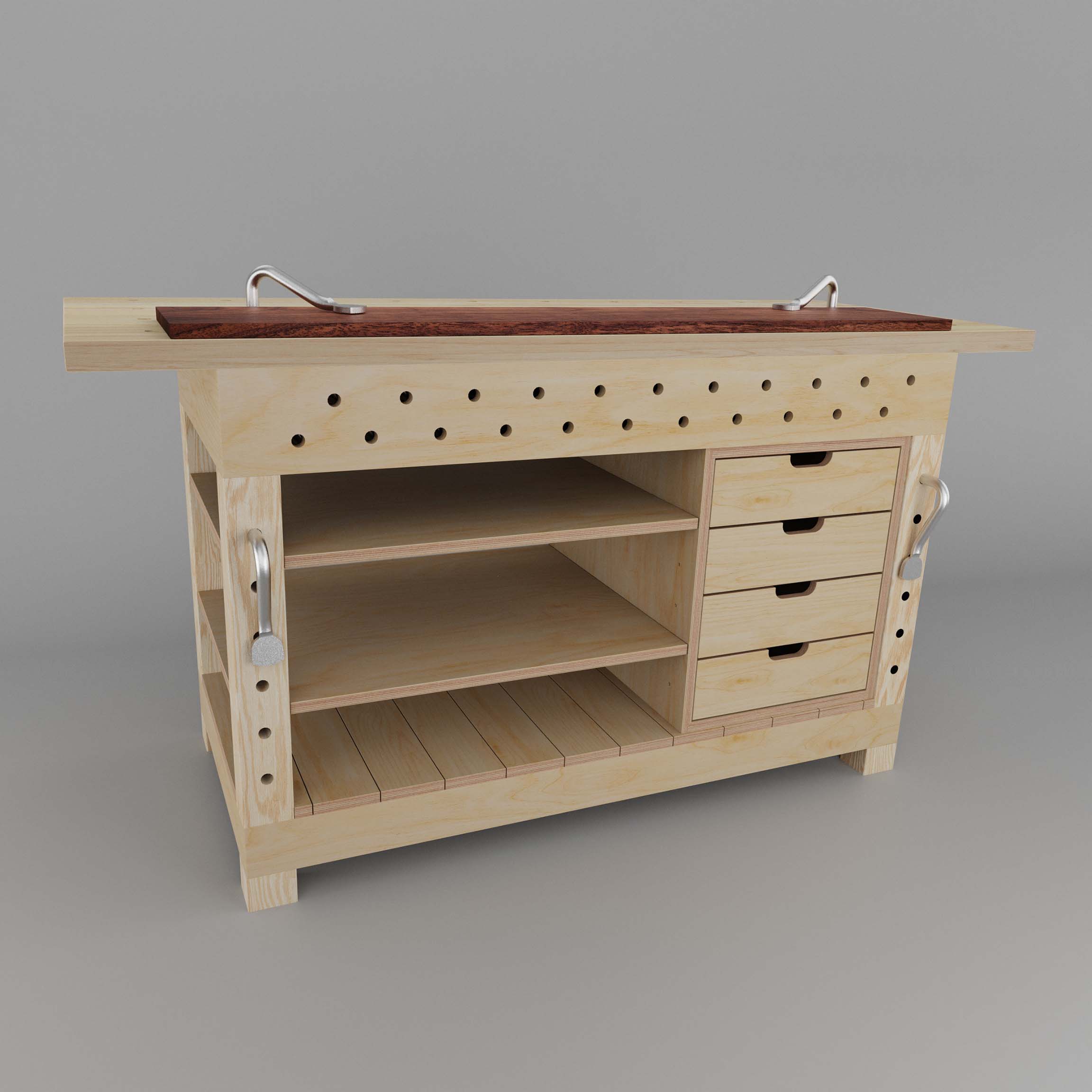The Modern Work Bench
If you spend a little time on the internet and especially social media, you’ll quickly be convinced that building a traditional woodworking bench is a must. You see them everywhere, built of the finest materials available and adorned with shiny vices spinning away effortlessly. But do you really need one? In this article, we’ll look at what those benches are all about and if maybe an alternative type of bench would be a better fit for the type of work that you do.
Many years ago, when I started my career as a furniture maker, I got a job at a shop run by a classically trained Danish cabinet maker and his son. I had built a toolbox as my final project in college, so I brought that to the shop and rolled it up to the bench assigned to me. It was a simple bench made of construction lumber with a sheet of MDF for a work surface. I made it work and ended up devising lots of clever ways to hold my material in place as I worked away. Many consisted of screwing jigs and boards right to the top, but it worked, and I was able to produce many pieces with that simple bench.
As I toiled away at that bench, I couldn’t help but admire the hardwood joiners bench my boss spent his days. It was a design that was popular in Denmark and unlike anything I’d seen before. It had a strange front vice that jutted out from one end of the bench and a tail vice at the other. It was a very purpose-built bench, meant for building furniture with hand tools. Overall, it was a small and compact bench and after admiring that bench for a while, I couldn’t help but think, it didn’t always suit the type of work we were doing.
I then came across the opportunity to get my hands on a few local Maple trees that were being removed from a relative’s property. I dreamed of the fantastic bench I could make and had the trees milled up and kiln dried. I purchased a set of plans with little knowledge of what I actually needed and set off on my bench-making adventure. I choose a traditional front vice mounted on the left-hand side and a tail vice on the right. I increased its size and made it so I could disassemble it. The bench was very heavy, and this would help make it somewhat manageable when it came time to move it.
I still have that bench over 25 years later. Its vices, being of mediocre quality, have seen better days but it’s still working and gets used almost daily when I’m working on new pieces of furniture. Over the years I’ve enjoyed working at that bench, but lately, I’ve started to look at it and think, much like I did those many years before, it doesn’t always fit the type of work I’m doing. Would a modern workbench be better suited? I will always keep a traditional bench in my shop because they’re perfect for certain operations and, to be honest, they just look so good but I’m sure a modern bench would be a welcome addition.
So, what kind of bench would be best for you? If you’re making furniture solely with hand planes and hand saws, then without question a traditional bench is a good option. If you find a lot of the tools you use have a cord dangling from them then perhaps a modern bench would be a better choice. Tools such as the biscuit joiner, Festool domino, plunge router, orbital sander, etc. are all commonplace in today’s wood shops. Tools have changed a lot over time to adapt to the modern ways in which we work, and the workbench is no exception. The modern bench with its array of holes drilled through the top seems gimmicky in comparison to the traditional bench but after you spend a little time working with them it becomes hard to deny how efficient they are.
More and more craftsmen are discovering the advantages of these new designs and manufacturers are eager to supply them with all kinds of hold downs, clamps, and various jigs that take advantage of the handy array of holes. This leaves no shortage of options for work holding and in many cases, a traditional vise may not be necessary. Depending on the type of work you do a modern bench might be just what you’ve been looking for.
Now no bench is perfect, and all kinds of arguments can be made as to why one design is better than another. Whole books are written on the subject. “The Workbench Book” by Scott Landis is a great read and is on my bookshelf along with a couple of others. The type of bench you choose will ultimately come down to the type of work you do most. Traditional, Modern, or both are all options in today’s workshops.
If you’re interested in taking the plunge then check out Branch Butchers “Modern Workbench” plans.
Over the years I’ve had an array of different benches, some good and some, not so much. With this bench, I’ve worked hard to create something that takes advantage of all the modern work-holding options available while staying simple to build and most importantly, affordable.
Have fun, be careful, and remember “Make it Or Die Trying.


0 Comments